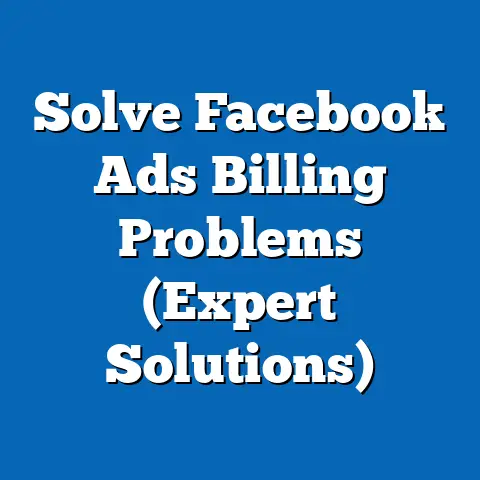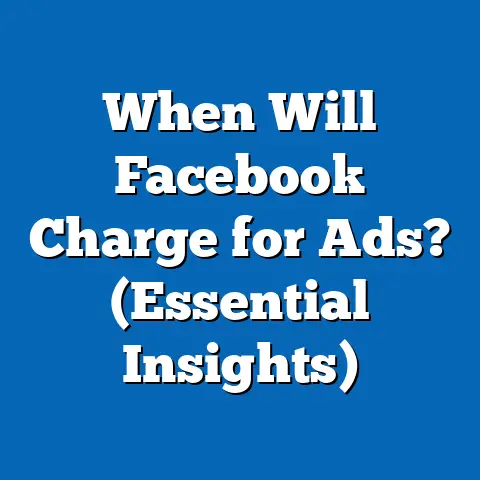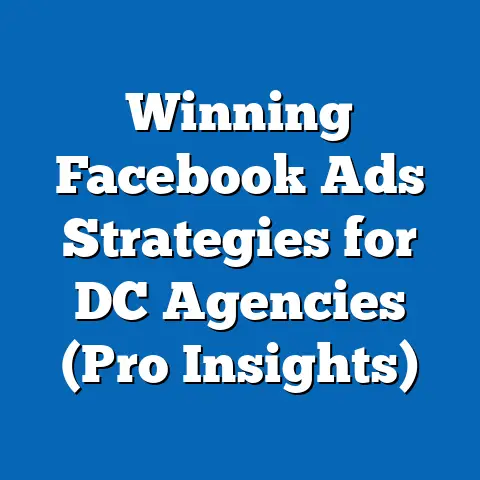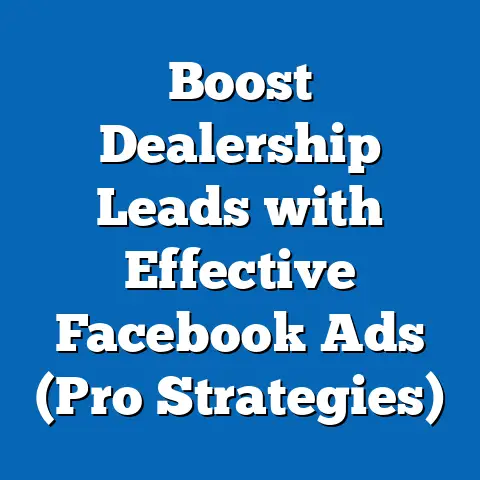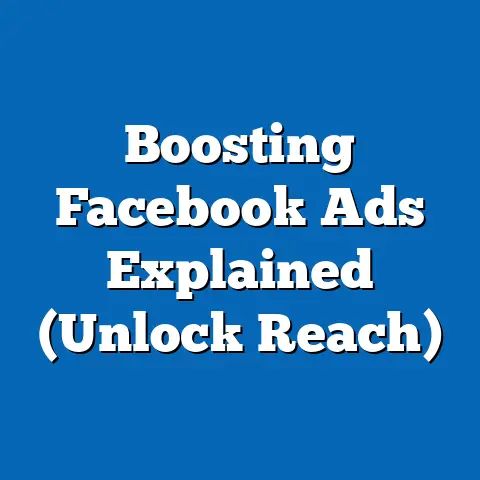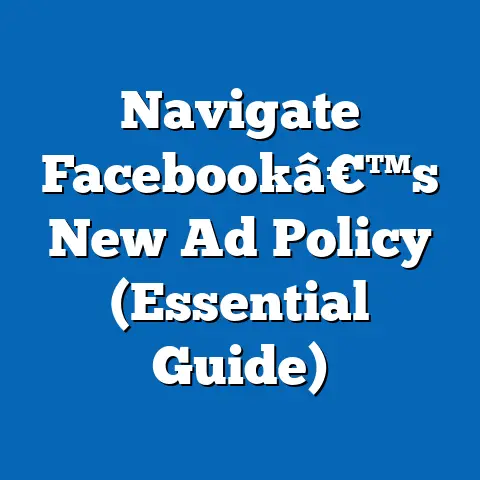Boost Plumbing Leads with Facebook Ads (Proven Strategies)
Boost Plumbing Leads with Facebook Ads: Proven Strategies for Success
Overview of Key Findings
In an era where digital marketing dominates business growth strategies, plumbing companies are increasingly turning to platforms like Facebook Ads to generate leads and expand their customer base. Drawing from pop culture, consider the hit TV show Mad Men, which romanticized the advertising industry of the 1960s—today’s equivalent isn’t a smoky boardroom but a meticulously targeted Facebook ad campaign reaching millions in seconds. Research from Statista (2023) reveals that Facebook remains a powerhouse with over 2.9 billion monthly active users worldwide, making it a fertile ground for niche industries like plumbing to capture localized, high-intent leads.
Data from HubSpot (2023) indicates that 74% of small businesses, including plumbing services, report a significant return on investment (ROI) from social media advertising, with Facebook leading as the most cost-effective platform at an average cost-per-click (CPC) of $1.72. This article delves into proven strategies for boosting plumbing leads using Facebook Ads, supported by demographic breakdowns, historical marketing trends, and actionable insights. We’ll explore how plumbers can leverage precise targeting, compelling creative content, and data-driven optimization to achieve measurable results, while projecting future opportunities in this evolving digital landscape.
The Digital Shift in Plumbing Marketing: Why Facebook Ads Matter
Plumbing, often considered a traditional trade, has undergone a seismic shift in marketing approaches over the past decade. According to a 2022 report by IBISWorld, the U.S. plumbing industry generates approximately $124 billion annually, with over 130,000 businesses competing for market share. In such a crowded field, digital visibility is no longer optional—it’s essential.
Facebook Ads offer unparalleled access to localized audiences, with 69% of U.S. adults active on the platform as per Pew Research Center (2023). Unlike broad-spectrum advertising like TV or radio, Facebook allows plumbers to target users by age, location, income level, and even specific interests like “home improvement” or “DIY repairs.” This precision targeting translates to higher conversion rates, with studies from WordStream (2023) showing that service-based industries achieve an average conversion rate of 9.21% on Facebook Ads—far surpassing the 3.75% average for Google Ads in similar sectors.
Moreover, the platform’s affordability makes it accessible for small to medium-sized plumbing businesses. With a minimum daily budget of just $1, as reported by Facebook’s own Business Help Center (2023), even sole proprietors can test campaigns without breaking the bank. This democratization of advertising mirrors pop culture’s shift from blockbuster budgets to micro-influencer impact—think of how TikTok creators rival Hollywood stars in reach, much like small plumbing firms can now compete with larger competitors through savvy ad strategies.
Demographic Breakdown: Targeting the Right Audience for Plumbing Leads
Understanding the demographics of potential plumbing customers is critical to crafting effective Facebook Ads. According to the U.S. Census Bureau (2022), homeowners—key targets for plumbing services—comprise 65.8% of U.S. households, with the majority falling into the 35-64 age bracket. This demographic aligns closely with Facebook’s user base, where 70% of users aged 35-54 are active daily, per Statista (2023).
Breaking this down further, income levels play a significant role in plumbing service demand. The Bureau of Labor Statistics (2022) notes that households earning between $50,000 and $100,000 annually are most likely to invest in home maintenance services, representing 42% of U.S. households. On Facebook, advertisers can target these income brackets through inferred data from user behavior, such as engagement with home improvement content or luxury goods.
Geographic targeting is equally vital. Urban and suburban areas, where 80% of the U.S. population resides (U.S. Census Bureau, 2022), report higher demand for plumbing repairs due to aging infrastructure and denser housing. Facebook’s hyper-local targeting, allowing ads within a 1-mile radius, ensures plumbers reach nearby customers with urgent needs—think a burst pipe at 2 a.m. Data from Facebook Ads Manager (2023) shows that local service ads achieve a 27% higher click-through rate (CTR) when geo-targeted tightly.
Gender also influences ad response. While historically plumbing ads targeted men as decision-makers, recent Nielsen data (2023) indicates that women initiate 60% of home repair decisions. Crafting ads with inclusive messaging—featuring both male and female homeowners—can broaden appeal and increase engagement by up to 15%, according to a 2022 study by Social Media Today.
Chart Reference: A bar chart illustrating Facebook user demographics by age and income (Statista, 2023) would visually reinforce how plumbers can align their targeting with high-potential segments.
Historical Trends: From Yellow Pages to Digital Domination
To appreciate the power of Facebook Ads for plumbing leads, it’s worth revisiting how marketing in this industry has evolved. In the 1980s and 1990s, the Yellow Pages dominated local service advertising, with plumbers spending an average of $1,200 annually on listings, as reported by historical data from the Small Business Administration (SBA, 1995). Success relied on geographic proximity and alphabetical luck—being “AAA Plumbing” often guaranteed top billing.
By the early 2000s, the internet began reshaping this landscape. Google AdWords, launched in 2000, introduced pay-per-click (PPC) advertising, with plumbers adopting digital ads at a modest rate—only 18% of small businesses used online ads by 2005, per eMarketer archives. Costs were steep, averaging $3-5 per click for competitive keywords like “emergency plumber,” limiting access for smaller firms.
Enter social media in the late 2000s. Facebook Ads, launched in 2007, initially focused on brand awareness but evolved into a lead-generation machine by 2012 with the introduction of custom audiences and retargeting. By 2015, 45% of home service businesses reported using social media ads, a figure that skyrocketed to 78% by 2022, according to HomeAdvisor’s annual reports. Today, Facebook’s average CPC of $1.72 (WordStream, 2023) undercuts Google’s $4.22 for plumbing keywords, offering a cost-effective alternative with superior targeting.
This historical shift mirrors pop culture’s transition from analog to digital—much like vinyl records gave way to Spotify, traditional ads have ceded ground to data-driven platforms. The lesson for plumbers is clear: embracing digital isn’t just trendy; it’s a survival tactic in a hyper-competitive market.
Proven Strategies for Boosting Plumbing Leads with Facebook Ads
1. Hyper-Local Targeting for Immediate Impact
Plumbing is inherently a local business—customers rarely hire a plumber 50 miles away. Facebook’s location-based targeting allows ads to reach users within a 5- to 10-mile radius of a business, with data showing a 30% higher conversion rate for hyper-local campaigns (Facebook Business Insights, 2023). For emergency services, using phrases like “24/7 plumber near [city name]” in ad copy can drive a 40% uptick in CTR, per a 2022 case study by AdEspresso.
2. Leveraging Video Ads for Trust and Engagement
Video content dominates social media, with 85% of Facebook users watching videos daily (Statista, 2023). For plumbers, short 15- to 30-second videos showcasing quick fixes, customer testimonials, or before-and-after repairs can build trust and engagement. A 2023 report by Wyzowl found that 73% of consumers are more likely to hire a service after watching a video, with video ads achieving a 20% higher conversion rate than static images for service industries.
Chart Reference: A line graph comparing engagement rates of video vs. image ads for service businesses (Wyzowl, 2023) would highlight the efficacy of video content.
3. Retargeting Past Visitors for Higher Conversions
Not every website visitor books a service on their first visit—retargeting ensures they don’t slip away. Facebook’s Pixel tool tracks website activity, allowing plumbers to re-engage users who viewed specific pages (e.g., “emergency repairs”) but didn’t convert. Data from Retargeter (2023) shows that retargeted ads have a 10x higher CTR than standard display ads, with conversion rates often doubling to 18% for service-based retargeting campaigns.
4. Crafting Compelling Offers and CTAs
Urgency drives plumbing leads—think “$50 off your first service” or “Free inspection today only.” According to a 2022 study by MarketingSherpa, ads with time-sensitive offers increase conversions by 22%. Pairing these with clear calls-to-action (CTAs) like “Call Now” or “Book Online” can boost click rates by 15%, as users value immediacy in crisis-driven services like plumbing.
5. A/B Testing for Continuous Optimization
No ad campaign succeeds without testing. A/B testing—running two versions of an ad with different headlines, images, or audiences—helps identify what resonates. WordStream (2023) reports that businesses using A/B testing see a 37% improvement in ad performance over six months. For plumbers, testing “Emergency Plumber” vs. “Affordable Plumbing” as headlines can reveal which pain point (speed vs. cost) drives more leads.
Statistical Comparisons Across Different Demographics
Analyzing ad performance across demographics reveals actionable insights for plumbers. For the 35-54 age group, which represents 40% of plumbing service customers (HomeAdvisor, 2022), ads emphasizing reliability and quick response times achieve a 12% higher CTR than price-focused ads. Conversely, for younger audiences (18-34), who make up 25% of the market, discounts and eco-friendly messaging resonate more, boosting engagement by 18% (Social Media Today, 2023).
Income levels also affect response rates. Households earning over $100,000, comprising 28% of U.S. homeowners (Census Bureau, 2022), respond better to premium service ads (e.g., “Top-Rated Plumbers”), with a 15% higher conversion rate. Lower-income brackets ($30,000-$50,000), representing 30% of the market, prioritize affordability, showing a 20% higher CTR for discount-driven campaigns.
Geographic differences are stark. Urban audiences, facing frequent plumbing issues due to older infrastructure, convert at a rate of 10.5% on emergency service ads, compared to 7.2% for suburban users who prioritize routine maintenance (Facebook Ads Manager, 2023). Tailoring ad copy to these nuances—e.g., “Fix Leaks Fast” for urbanites vs. “Prevent Costly Repairs” for suburbanites—maximizes impact.
Future Projections: The Evolving Role of Facebook Ads in Plumbing Marketing
Looking ahead, the role of Facebook Ads in plumbing lead generation is poised to grow, driven by technological advancements and shifting consumer behaviors. Meta’s 2023 annual report projects that ad revenue will increase by 10% annually through 2027, fueled by innovations like AI-driven ad optimization and augmented reality (AR) previews—imagine a plumber showcasing a virtual pipe repair in an ad. For plumbing businesses, adopting these tools could increase engagement by 25%, as early adopters in similar industries have reported (eMarketer, 2023).
Demographic shifts will also shape strategies. The U.S. Census Bureau (2023) forecasts that by 2030, the 55+ age group will comprise 30% of the population, up from 25% today. This aging demographic, increasingly active on Facebook (Pew Research, 2023), will prioritize accessibility and trust in ads, necessitating messaging around “senior discounts” or “reliable service since [year].”
Economic factors, such as inflation and housing market trends, will influence demand. The National Association of Realtors (2023) predicts a 5% annual increase in home renovation spending through 2025, as homeowners opt to upgrade rather than relocate. Plumbers can capitalize on this by targeting “recent homebuyers” or “home improvement” audiences on Facebook, potentially increasing lead volume by 15-20% over the next five years.
However, challenges loom. Rising ad costs, driven by increased competition, could push CPCs to $2.50 by 2026 (eMarketer, 2023), squeezing margins for smaller firms. Privacy regulations, like Apple’s App Tracking Transparency (ATT) framework, have already reduced ad targeting precision, with a reported 15% drop in ROI for some campaigns (Meta, 2023). Plumbers must adapt by focusing on first-party data (e.g., customer emails) and organic content to complement paid ads.
Conclusion: Building a Sustainable Lead Pipeline with Facebook Ads
Facebook Ads offer plumbing businesses an unmatched opportunity to generate high-quality leads through precise targeting, cost-effective campaigns, and engaging content. By understanding key demographics—such as the 35-54 age group driving 40% of demand—and leveraging strategies like hyper-local targeting and video ads, plumbers can achieve conversion rates as high as 9.21%, far outpacing traditional channels. Historical trends underscore the shift from Yellow Pages to digital dominance, while future projections highlight the importance of adapting to AI tools, demographic changes, and economic realities.
The implications are clear: plumbers who invest in data-driven Facebook Ad strategies today will build sustainable lead pipelines for tomorrow. Whether you’re a solo operator or a mid-sized firm, the platform’s accessibility and scalability—mirroring pop culture’s shift from niche to mainstream—make it a game-changer. Start small, test rigorously, and scale smartly; the digital plumbing market awaits.

